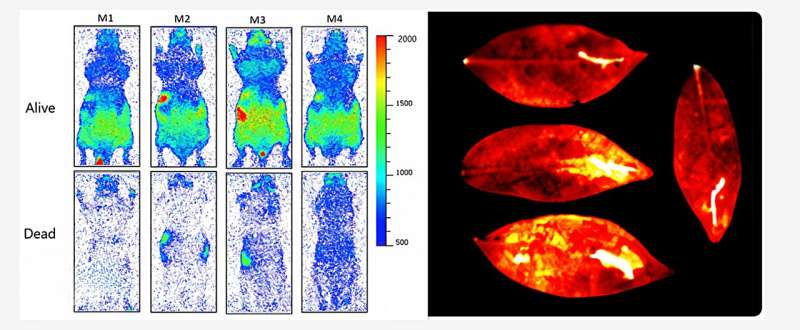The light of someone’s life might not be just another person, but light in the literal sense. According to a recent study by researchers from University of Calgary, every living system emits light without requiring external excitation due to a biological phenomenon known as ultraweak photon emission (UPE).
In mice, UPE was linked to vitality as live mice emitted significantly higher UPE intensity compared to recently dead mice. In plants, however, UPE varied depending on exposure to stress factors like temperature changes, injury and chemical treatments, as reported in The Journal of Physical Chemistry Letters.
Living organisms are compact biochemical labs where complex chemical reactions keep the system up and running. Cellular metabolism, a series of chemical reactions that fuel life-sustaining processes, produces a group of highly reactive oxygen-containing molecules produced as a natural byproduct called reactive oxygen species or ROS.
Studies suggest that ROS plays a central role in UPE. When organisms encounter stress, they activate biochemical pathways that generate ROS, which act as signaling molecules in the cellular stress response. However, excessive ROS production can lead to oxidative stress, overwhelming the cell’s antioxidant defenses. This oxidative stress can induce electron excitation and transfer processes, ultimately resulting in UPE.

Unlike bioluminescence, which produces high-intensity light visible to the naked eye, UPE, also known as biophoton emission, is a spontaneous release of extremely low-intensity light that is invisible to the human eye and falls within the spectral range of 200–1,000 nm. This faint light has been detected in a wide range of life forms—from single-celled organisms and bacteria to plants, animals, and even humans.
Despite being so widely observed, not much is known about the impact of mortality and stress factors on UPE. Furthermore, the ability to monitor UPE in response to stress factors and injuries could be a powerful, non-invasive tool for diagnostics and medical research.
The researchers used advanced imaging techniques to explore the biological significance of UPE by directly comparing emissions in living versus dead animals, while also systematically visualizing the effects of temperature, injury, and chemical treatments on UPE in plants.

To carry out the experiments, the researchers designed ultradark enclosures to eliminate environmental light interference. They then used an Electron-Multiplying Charge-Coupled Device (EMCCD) camera for imaging plants and a Charge-Coupled Device (CCD) camera with IVIS system to image UPE changes in mice.
The results revealed that despite both groups having the same body temperature of 37°C, the live mice showed robust emissions, whereas the UPE from the euthanized mice was nearly extinguished. In plants, an increase in temperature and injuries led to an increase in UPE intensity. Injured sites were consistently brighter than uninjured parts—a change in the former was observed once the site received any chemical treatment.
This study establishes that UPE can act as a sensitive indicator of vitality in animals and of stress responses in plants. The researchers suggest that these findings could catalyze the application of UPE imaging as a non-invasive technique for both basic biological research and clinical diagnostics.
More information:
V. Salari et al, Imaging Ultraweak Photon Emission from Living and Dead Mice and from Plants under Stress, The Journal of Physical Chemistry Letters (2025). DOI: 10.1021/acs.jpclett.4c03546
© 2025 Science X Network
Citation:
Living beings emit a faint light that extinguishes upon death, according to a new study (2025, May 17)
retrieved 17 May 2025
from https://phys.org/news/2025-05-emit-faint-extinguishes-death.html
This document is subject to copyright. Apart from any fair dealing for the purpose of private study or research, no
part may be reproduced without the written permission. The content is provided for information purposes only.

